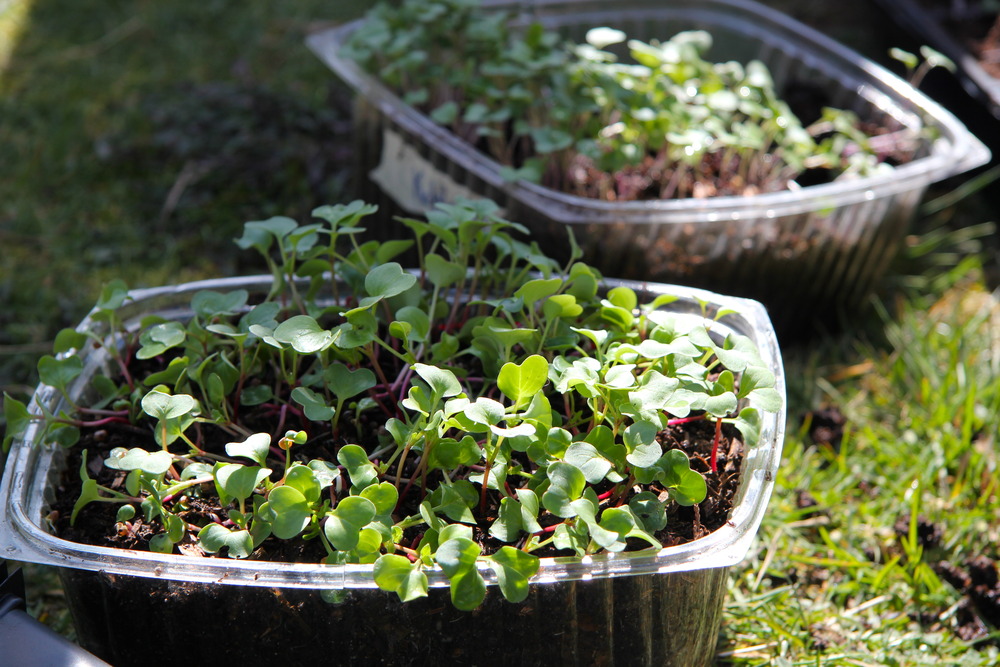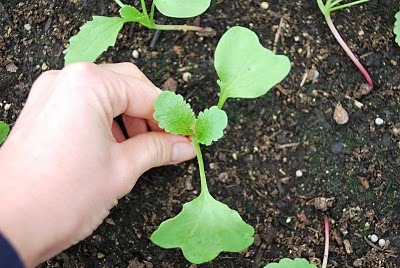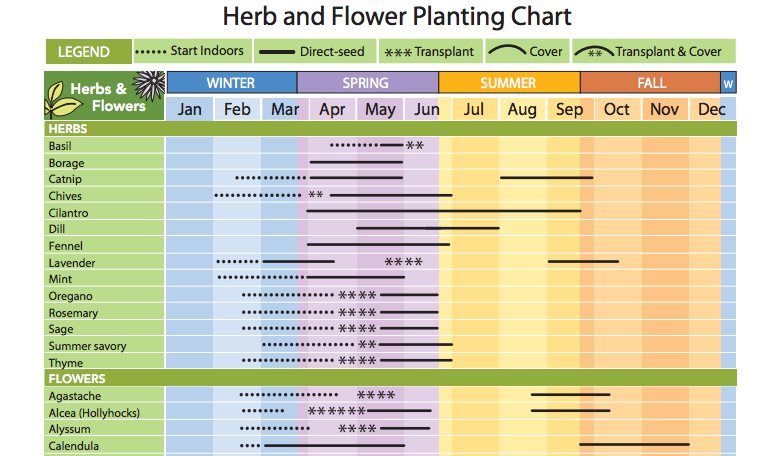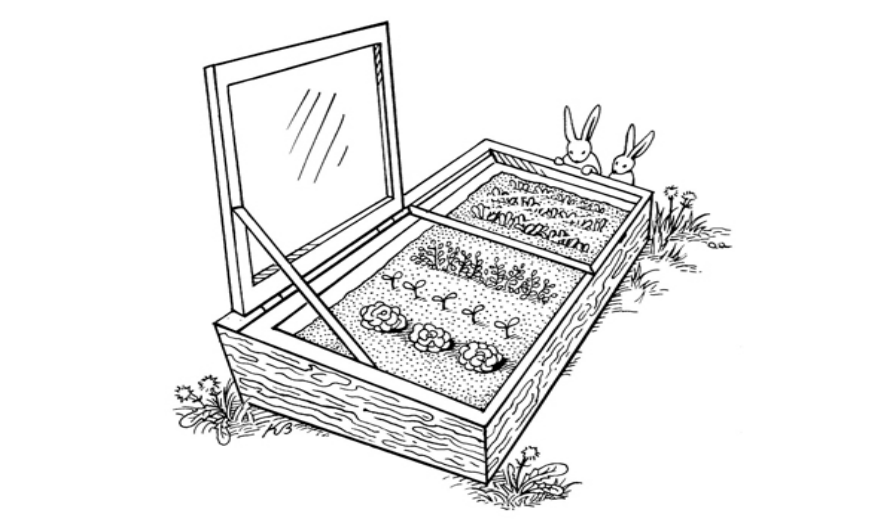Photo: Radish seedlings ready for transplanting
We hosted a local gardening class at the farm this past weekend that discussed seedling health, transplanting tips and the use of hotbeds to extend the growing season. Something I learned that I found really fascinating and helpful was this:
Seeds hold enough nutrients within themselves to fully support their own growth until they’ve formed their first true leaf.
Amazing! I’d had no idea of the extent of nutrients living within a seed and understanding this means that I now know when to transplant seedlings into nutrient rich soil (or add natural fertilizers to the sterile potting soil they’re already in). SOOO helpful since up until now the only indicators I was relying on to inform my transplanting decisions were seedling size or the timing listed on planting charts.
If this information is new to you too, you may also wonder what the first TRUE leaf of a seedling is – since that’s the signifier that tells us when seedlings have used up their inner nutrients and need external help to continue growing. Contrary to how it may sound, the first true leaf isn’t the first leaf that appears when your seedling sprouts. That (or those, as there are often two) are called cotyledons. Cotyledons are part of the seed embryo and they are the first leaves to appear on a seedling. The first TRUE leaf however, is the first leaf that grows after the cotyledons have formed.
Take a look at the photo above. It’s a shot of some radish seedlings that we transplanted in class. Notice how the seedlings each have two round leaves. These leaves are the cotyledons of the radish seeds. Since there are two in this case, they are referred to as ‘dicots’ (plants with a single cotyledon are ‘monocots’). These first leaves on seedlings often look the same on many different plant varieties, but the first TRUE leaf holds the visual characteristics appropriate to its own specific plant variety (see photo of some first true radish leaves growing up between the cotyledons below).
Now that I know this, I feel like I’m able to observe my little seedlings with new eyes and give them the attention and care that they need. So thankful for spring and all the amazing things we get to learn as we nurture and watch our seedlings grow into beautiful life-giving plants.



